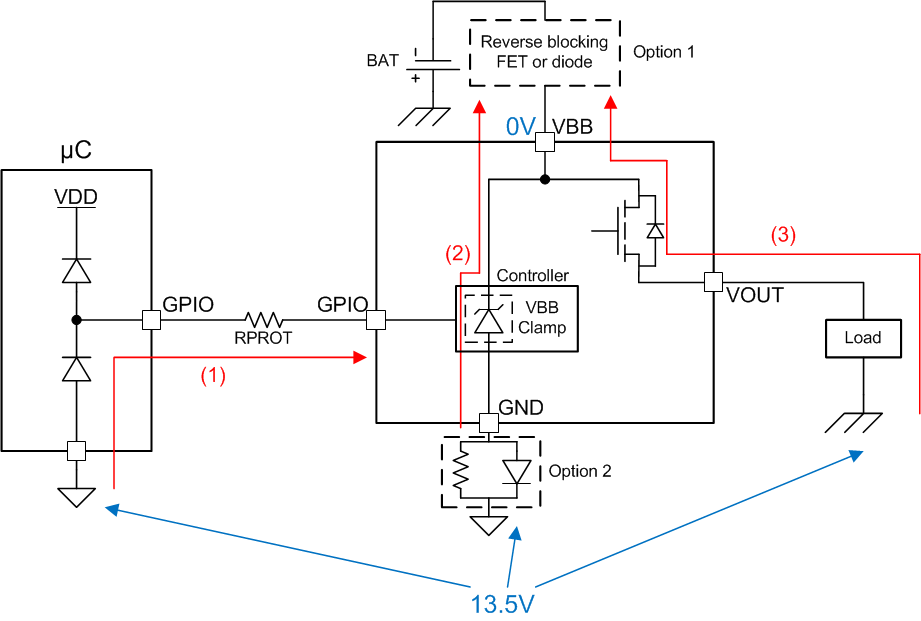JAJSHA8A February 2018 – April 2019 TPS2HB50-Q1
ADVANCE INFORMATION for pre-production products; subject to change without notice.
- 1 特長
- 2 アプリケーション
- 3 概要
- 4 改訂履歴
- 5 Device Comparison Table
- 6 Pin Configuration and Functions
- 7 Specifications
- 8 Parameter Measurement Information
-
9 Detailed Description
- 9.1 Overview
- 9.2 Functional Block Diagram
- 9.3
Feature Description
- 9.3.1 Protection Mechanisms
- 9.3.2 Diagnostic Mechanisms
- 9.4 Device Functional Modes
- 10Application and Implementation
- 11Power Supply Recommendations
- 12Layout
- 13デバイスおよびドキュメントのサポート
- 14メカニカル、パッケージ、および注文情報
9.3.1.5 Reverse Battery
In the reverse battery condition, the switch will automatically be enabled regardless of the state of EN1/EN2 to prevent excess power dissipation inside the MOSFET body diode. In many applications (for example, resistive loads), the full load current may be present during reverse battery. In order to activate the automatic switch on feature, the SEL2 pin must have a path to module ground. This may be path 1 as shown in Figure 6, or if the SEL2 pin is unused, the path may be through RPROT to module ground.
Protection features like thermal shutdown are not available during a reverse battery event. Care must be taken to ensure that excessive power is not dissipated in the switch during the reverse battery condition.
There are two options for blocking reverse current in the system. The first option is to place a blocking device (FET or diode) in series with the battery supply, blocking all current paths. The second option is to place a blocking diode in series with the GND node of the high-side switch. This method will protect the controller portion of the switch (path 2), but it will not prevent current from flowing through the load (path 3). The diode used for the second option may be shared amongst multiple high-side switches.
Path 1 shown in Figure 6 is blocked inside of the device.
 Figure 6. Current Path During Reverse Battery
Figure 6. Current Path During Reverse Battery